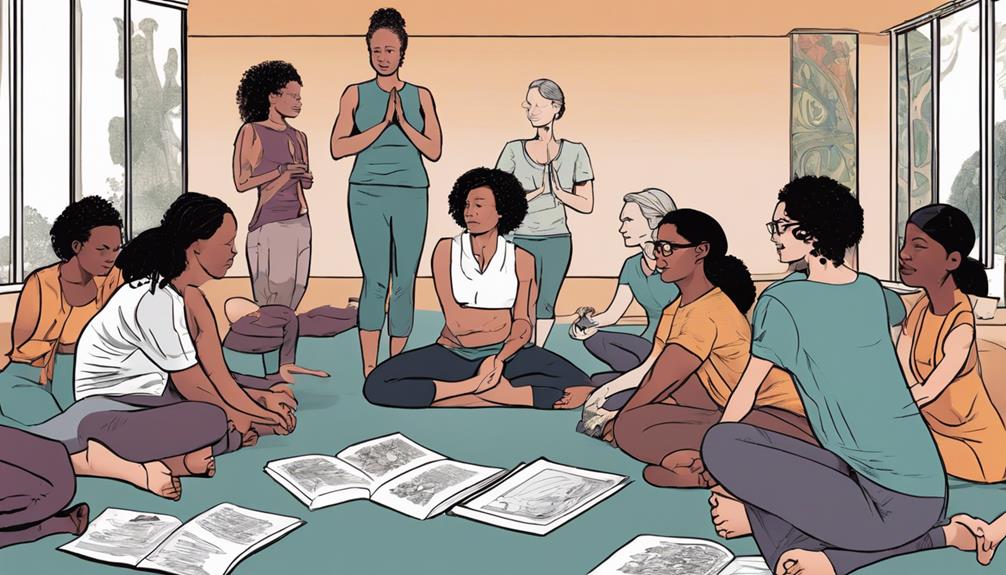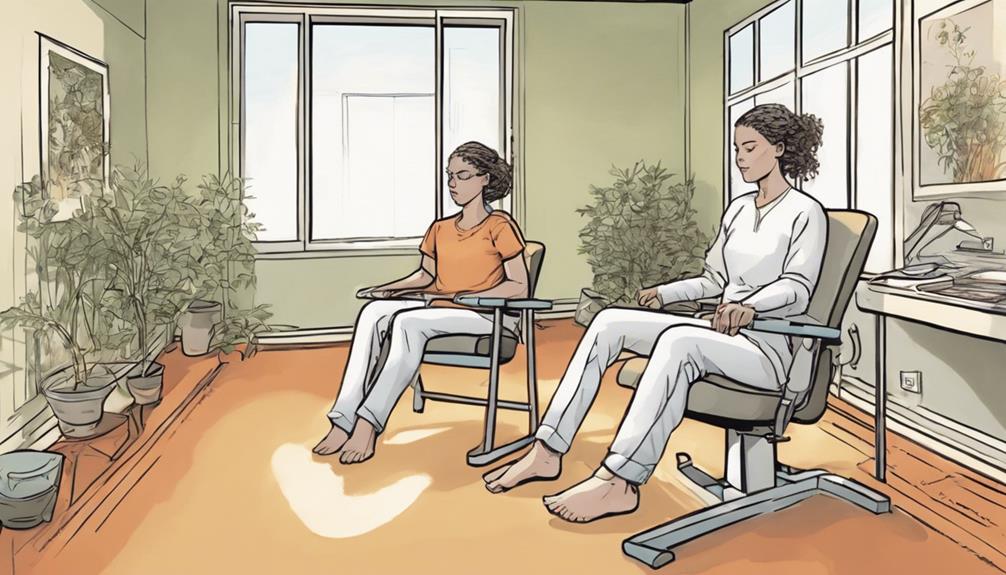The orienting response is your brain’s natural habit of redirecting attention to calming sights or sounds, helping you settle when overwhelmed. This instinctive process evolved to keep you safe by focusing on familiar or soothing stimuli, like peaceful images or familiar objects. By intentionally engaging this response, you can switch focus away from chaos and ease anxiety. If you explore this further, you’ll find simple ways to harness this amazing natural tool for calm and clarity.
Key Takeaways
- The orienting response naturally draws attention to familiar or calming stimuli, helping to reset the nervous system during stress.
- Intentionally focusing on peaceful images or objects leverages this instinct to promote relaxation and reduce overwhelm.
- Recognizing automatic attention shifts allows individuals to redirect focus deliberately, calming heightened emotional responses.
- This innate mechanism helps manage sensory overload by guiding attention away from chaos toward soothing stimuli.
- Using the orienting response as a calming technique aligns with our evolutionary design to maintain safety and emotional balance.

Have you ever noticed how your attention automatically shifts when something new or unexpected happens? That’s no coincidence. It’s part of your natural response, rooted in your evolutionary past, designed to keep you safe and aware of potential threats or opportunities. This phenomenon is closely tied to visual attention, which is your brain’s way of quickly scanning your environment. When something catches your eye—a sudden movement, a bright flash, or an unfamiliar sound—your visual attention zeroes in on it almost instantly. This automatic focus isn’t random; it serves an important evolutionary purpose. Our ancestors needed to be constantly alert to predators, changing weather, or new food sources. By honing in on sudden sights or sounds, they could react swiftly, avoiding danger or seizing opportunities that might guarantee their survival. Today, this same mechanism still operates, even in a world filled with distractions and information overload. Your brain’s prioritization of novel stimuli helps you stay aware of your surroundings, but it can also lead to feeling overwhelmed when too many things demand your attention at once. Recognizing this innate response is vital because it offers insight into how your mind works during moments of overwhelm. When your environment becomes cluttered with noise, interruptions, or conflicting demands, your natural tendency is to become hyper-focused on the most salient stimuli. That’s your visual attention kicking into high gear, driven by its evolutionary purpose to keep you safe. But this can backfire, making you feel anxious or unable to concentrate. Recognizing that your attention is simply doing what it’s wired to do helps you step back and regain control. Instead of fighting the process, you can use it to your advantage. For example, intentionally directing your gaze toward specific calming stimuli—like a peaceful image or a familiar object—can help shift your focus away from chaos and soothe your nerves. This is the orienting response in action: your brain’s natural way of orienting toward something familiar or calming, which helps reset your nervous system. Being aware of how visual attention functions allows you to harness this mechanism to promote relaxation and reduce overwhelm.
Frequently Asked Questions
Can the Orienting Response Be Used for Anxiety Management?
Yes, you can use the orienting response for anxiety management. It works by engaging your attention with natural stimuli, which helps shift focus away from anxious thoughts. Incorporating mindfulness techniques during this process can enhance stress reduction. When you notice feelings of overwhelm, take a moment to observe your surroundings calmly. This simple act activates the orienting response, promoting relaxation and helping you regain control during stressful moments.
How Quickly Does the Orienting Response Typically Work?
You’re wondering about the timing effectiveness of the orienting response, especially its immediate response. Typically, it works quickly—often within seconds—helping you shift your focus and calm your nerves. When you notice feeling overwhelmed, simply engaging your senses or redirecting your attention triggers this reflex almost immediately. Its fast action makes it a handy tool for managing anxiety on the spot, giving you a natural, swift way to regain calm.
Are There Age Limitations for Practicing the Orienting Response?
You might wonder if age affects practicing the orienting response. Developmental considerations and age-related differences play a role, but generally, people of all ages can benefit. Children, adults, and seniors can use this technique to calm overwhelm, though the way they engage might differ. Younger individuals may respond quickly, while older adults might need more practice. Overall, it’s adaptable and safe across different age groups.
Can the Orienting Response Help With Sensory Overload?
Ever find yourself overwhelmed by sensory overload, wishing for a quick relief? The orienting response can help by engaging your senses, aiding sensory integration and reducing overwhelm. When you intentionally focus on a calming stimulus in your environment, you activate this natural reflex, which can quickly redirect your attention and soothe overstimulation. It’s a simple, effective way to manage sensory overload and regain calm in stressful moments.
What Are Common Situations Where the Orienting Response Is Effective?
You’ll find the orienting response effective in various situations, especially when environmental triggers or social settings become overwhelming. When you notice sudden changes like loud noises, bright lights, or unfamiliar faces, engaging your senses helps you regain control. This natural reflex redirects your attention, calming your mind. Whether at a busy event or in a chaotic environment, using this response can help you stay grounded and manage sensory overload better.
Conclusion
By understanding and using the orienting response, you can quickly ease feelings of overwhelm. Imagine you’re feeling anxious during a busy day; simply shifting your focus to your surroundings—like noticing the textures around you—can ground you. For instance, someone practicing this during a stressful moment reported feeling calmer and more centered within minutes. Next time anxiety hits, try this simple trick: turn your attention outward and let your natural curiosity restore your calm.










